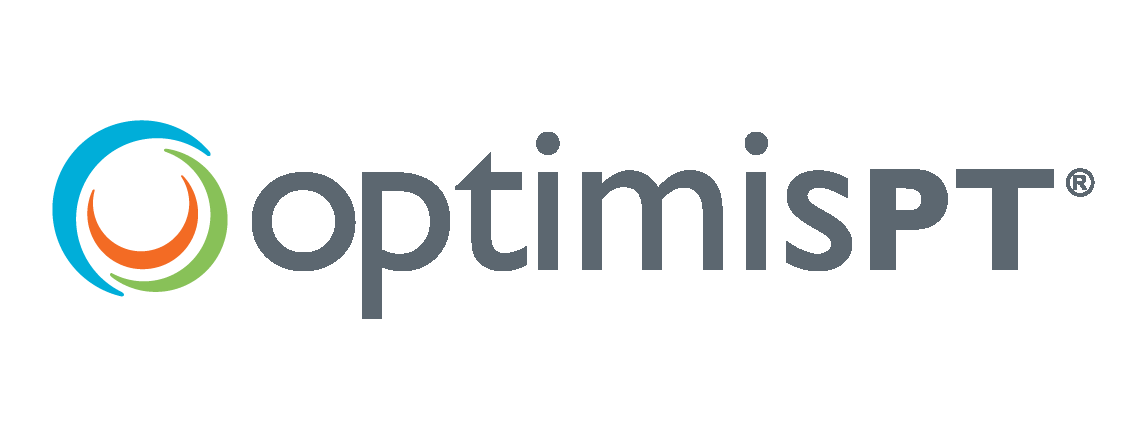MIPS 2020 Improvement Activities: A Quick Guide for Rehab Therapists
By: Cheryl “Chae” Dimapasoc, PT, DPT; OptimisPT Director of Implementation and Compliance
If you are reporting MIPS, Improvement Activities is one of the two categories that therapists have to focus on. These activities are designed to improve clinical practice or care delivery that, when effectively executed, lead to improved outcomes. This category is worth 15% of the total MIPS score. The other category reportable by therapists, Quality, is weighted at 85% of the total score since therapists are exempt from reporting *cost and *promoting interoperability.
Here is a breakdown of what the category of Improvement Activities entails:
- 15% of the Final MIPS Score
- Need to be performed for 90 consecutive days (1 quarter)
- Group Reporting: activity(ies) need to be performed by 50% of those on staff; be sure to save documentation for potential auditing
- Attest to the activity prior to 2020 data submission
- Full credit requires 40 points of activities: 2 high, 1 high + 2 medium, or 4 medium
- A Small Practice gets double credit and will only need 1 high or 2 medium
The biggest change for 2020 is 50% of the group must now perform improvement activities versus one person from the group, as was the case in 2019. If you haven’t chosen your improvement activities for 2020 and you plan on opting-in or are required to report MIPS, you’ll need 50% of your group participation to begin by October 1, 2020. The chart included below should help you choose your “slam dunk options” by nature of using OptimisPT and a QCDR for your MIPS reporting.
In the chart, the activities highlighted in orange denote recommended improvement activities if using OptimisPT. Those in blue denote recommended improvement activities if using PTOR (Physical Therapy Outcomes Registry).
| Subcategory Name | Activity Name | Activity Description | Activity Weighting | Validation | Suggested Documentation (inclusive of dates during the continuous 90-day period) |
| Beneficiary Engagement IA_BE_16 | Evidence-based techniques to promote self- management into usual care | Incorporate evidence-based techniques to promote self-management into usual care, using techniques such as goal setting with structured follow-up, Teach Back, action planning or motivational interviewing. | Medium | Functionality of evidence based techniques to promote self- management into usual care | Documented evidence-based techniques to promote self-management into usual care; and evidence of the use of the techniques (e.g. clinicians’ completed office visit checklist, EHR report of completed checklist, copies of goal setting tools or techniques, motivational interviewing script/questions, action planning tool with patient feedback;Implement Teach-back strategy to ensure patient’s understanding of medical information shared during an encounter |
| Beneficiary Engagement IA_BE_22 | Improved practices that engage patients pre-visit | Implementation of workflow changes that engage patients prior to the visit, such as a pre-visit development of a shared visit agenda with the patient, or targeted pre-visit laboratory testing that will be resulted and available to the MIPS eligible clinician to review and discuss during the patient’s appointment. | Medium | Pre-visit agenda shared with patient | 1) Documentation of a letter, email, portal screenshot, etc. that shows a pre-visit agenda was shared with patient; and2) Documentation of the practice’s patient engagement workflow3)Implement strategies to engage patients and their family members to co-create a visit agenda, including providing the outcome measure pre-visit and discussing during the initial evaluation |
| Patient Safety and Practice Assessment IA_PSPA_21 | Implementation of fall screening and assessment programs | Implementation of fall screening and assessment programs to identify patients at risk for falls and address modifiable risk factors (e.g., Clinical decision support/promotes in the electronic health record that help manage the use of medications, such as benzodiazepines, that increase fall risk). | Medium | Functionality of fall screening and assessment programs | 1) Implementation of a Falls Screening and Assessment Program – Implementation of a Falls screening and assessment program that uses valid and reliable tools to identify patients at risk for falls and addresses modifiable risk factors, for example the STEADI program for identification of falls risk; and2) Implementation Progress – Documentation of progress made on falls screening and assessment after implementation of tool |
| Achieving Health Equity IA_AHE_1 | Engagement of new Medicaid patients and follow-up | Seeing new and follow-up Medicaid patients in a timely manner., including individuals dually eligible for Medicaid and Medicare. A timely manner is defined as within 10 business days for this activity. | High | Functionality of practice in seeing new and follow- up Medicaid patients in a timely manner including patients dually eligible. “Engaging” patients may include, but is not limited to: Establishing patient- provider relationship, assisting patient with care management plan, medication management and reconciliation, use of patient portal, use of community health worker or other provider(s) to help patients navigate health care services | Timely Appointments for Medicaid and Dually Eligible Medicaid/Medicare Patients – Statistics from EHR or scheduling system (may be manual) on time from requires for appointment to first appointment offered or appointment made by type of visit for Medicaid and dual eligible patients; and Improvement Activities – Assessment of new and follow-up visit appointment statistics and other patient-level data to identify and implement improvement activities. Documentation should include planned and in-progress improvement activities and intended aims. |
| Achieving Health Equity IA_AHE_3*QCDR Specific Activity | Promote use of Patient-Reported Outcome Tools | Demonstrate performance of activities for employing patient-reported outcome (PRO) tools and corresponding collection of PRO data such as the use of PHQ-2 or PHQ-9, PROMIS instruments, patient reported Wound-Quality of Life (QoL), patient reported Wound Outcome, and patient reported Nutritional Screening. | High | Demonstrated performance of activities to promote use of patient-reported outcome tools and corresponding collection of PRO data | Use of patient-reported outcome tools (e.g., feedback reports demonstrating use of patient-reported outcome tools and corresponding collection of PRO data (e.g., use of PHQ-2 or PHQ-9 and PROMIS instruments)).Collection of the IROMS measures- monitoring of performance rates |
| Achieving Health Equity IA_AHE_6 | Provide Education Opportunities for New Clinicians | MIPS eligible clinicians acting as a preceptor for clinicians-in-training (such as medical residents/fellows, medical students, physician assistants, nurse practitioners, or clinical nurse specialists) and accepting such clinicians for clinical rotations in community practices in small, underserved, or rural areas. | High | Participation as a preceptor for clinicians- in-training that encourage clinical rotation in community practices in small underserved, or rural areas | Documentation of participation as a preceptor for clinicians-in-training that encourages clinical rotations in community practices in small underserved, or rural areas. Examples of eligible clinicians anticipated to serve as a preceptor would include: medical residents/fellows; medical students, physical assistants, nurse practitioners, or clinical nurse specialists. |
If you are reporting MIPS via a QCDR (FOTO, PTOR), you will select the improvement activities you have chosen prior to submitting your MIPS measures at the end of the performance period. It is recommended that you keep a record of clinicians within your group that participated, the 90-day consecutive date range that the activity was performed and which improvement activity was performed.
If you are reporting MIPS via claims, you will want to go into your account on the QPP website to add your improvement activities for submission.
Whether you are an OptimisPT user or not, we strongly encourage you to start thinking about your 2020 Improvement Activities if you have not done so already. We’ve tried to narrow down some options that are more appropriate for rehab therapists and should not be too difficult to complete. However, if you would like to review a comprehensive listing of all available improvement activities, please visit the improvement activities section of the QPP website.




